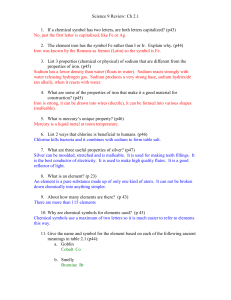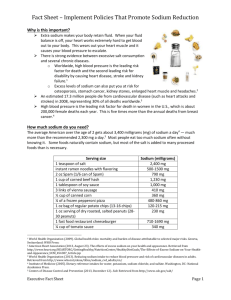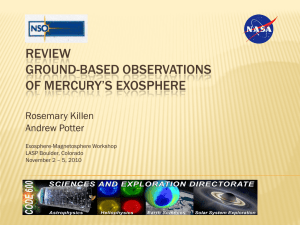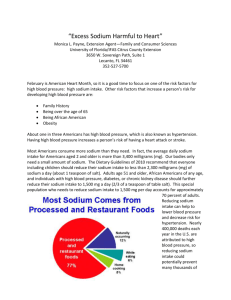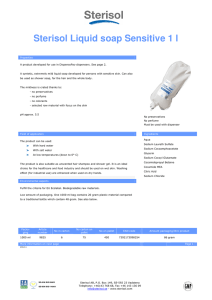Mercury Sodium Atmospheric Spectral Imager
advertisement
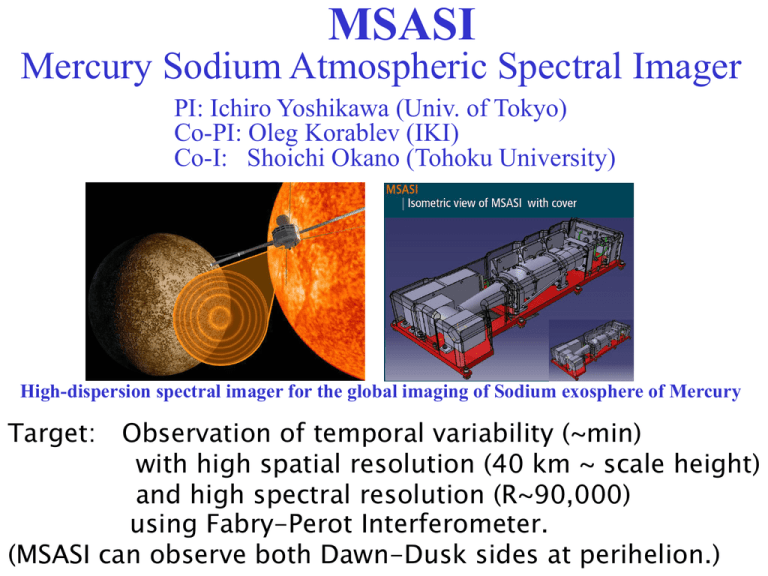
MSASI Mercury Sodium Atmospheric Spectral Imager PI: Ichiro Yoshikawa (Univ. of Tokyo) Co-PI: Oleg Korablev (IKI) Co-I: Shoichi Okano (Tohoku University) High-dispersion spectral imager for the global imaging of Sodium exosphere of Mercury Target: Observation of temporal variability (~min) with high spatial resolution (40 km ~ scale height) and high spectral resolution (R~90,000) using Fabry-Perot Interferometer. (MSASI can observe both Dawn-Dusk sides at perihelion.) Mercury’s Sodium Exosphere Why do we use Fabry-Perot interferometer? Intensity: a few Mega Rayleigh 1A bandpass Width of sodium emission line is several tens mA. λ/Δλ>100,000 is necessary. Fabry-Perot interferometer Fringe Fabry-Perot Etalon (BBM) Light source: He-Ne laser (Red) Detector size Radiation tolerance CMOS detector (BBM) Main objectives of MSASI 1. To image sodium exosphere (column density and spatial distribution) with a spatial resolution of 1/64 RM and intensity range from 10M to 10K Rayleigh. These are sufficient to find sodium rich spots on the surface, if they do exist. (e.g. radar bright spots and Caloris basin). 2. To measure local and temporal variations of the sodium exosphere (time scale: less than a few hours) - short-term: Substorm - middle: North/South asymmetry - long: Seasonal variation and places of interest (Caloris basin, polar regions, etc.) 3. To identify release mechanisms which are stimulated by incoming materials such as solar wind ions and micro-meteoroids. Close collaboration with MPO/Phebus [Abundance for minor elements, High-resolution vertical distributions, etc.] Expected Distribution and Brightness of Sodium TAA=60 degree (High Solar Radiation Pressure) Lower limit of MSAI Predicted D2-line brightness based on Na distribution models viewing from MMO orbit is presented. Processes of photon stimulated desorption (PSD), charged-particle sputtering (CPS), and micrometeoroid impact/vaporization (MIV) are assumed to be operated in each panel. Low SRP Distribution of sodium atoms around the Mercury depending on true anomaly angle (TAA). Sodium atoms are assumed to be uniformly ejected upward from the surface with initial velocities of 3 km/sec. The lifetime of the atom defined by the photoionization varies from 1.6 to 3.6 hours. Current status of MSASI instrumentation: ●Critical parts have been verified. ●Internal Thermal problem is still open, but will be solved. ●PDR for MSASI will be held on .November 6th . Fabry-Perot etalon in vibration test Radiation tolerant sensor EMC test@RISH Spin-scan & mirrorscan for 2-D image Slit image at D2-line Spin-scan covers the longitudinal direction. Mirror-scan covers the latitudinal direction. Longitudinal At the best performance, full disk image with 1/64 RM resolution in every minute. Operation Plan MSASI is operated Mercury is in sight. while Nominal observation (Window-1 + Window-2) period occupies about 36% per orbit. • Normal mode 3.2Mbyte/orbit • High priority mode 9.6Mbyte/orbit (e.g. True Anomaly Angle ~ 60°.) • Low priority mode 1.6Mbyte/orbit (e.g. True Anomaly Angle ~ 180°.)

